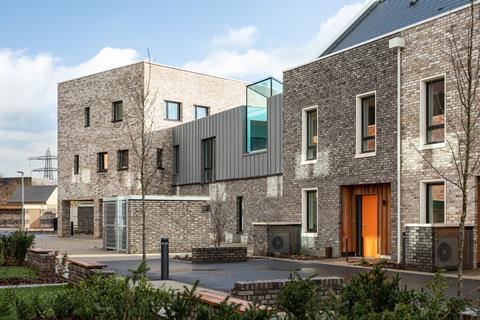Five-year study says sustainable development need not be expensive
False assumptions about the size of capital costs are preventing major housebuilders from developing low carbon housing, according to a five-year government study.
The Department for Business, Energy and Industrial Strategy’s Building for 2050 report was commissioned in 2017 with the initial intention of reviewing three or four low carbon developments built by major housebuilders.

When no examples were identified, four SME-built schemes were chosen for physical monitoring and social research to determine the drivers and obstacles to the supply and demand for low cost, low carbon homes.
The £1.9m research project, led by Aecom, identified perceived additional capital costs for design and construction, but said this need not be the case.
The reported additional capital cost for two of the observed schemes – Tallack Road in Waltham Forest, London and Marmalade Lane co-housing in Cambridge – was only 1% to 2.5% of the construction cost.
While two of the other schemes had higher additional costs – 18% for Active Homes in Neath, Wales and 9% for Etopia Homes in Corby, Northamptonshire – these schemes received grant funding and were intentionally more innovative, involving complex designs.
The report said, based on interviews with the housing industry, that: “A small increase in construction costs would not prevent homes being built, as the land and development market would adjust through changing sales values, land value and improved supply chains.”
>> Building Study: Marmalade Lane, Cambridge, by Mole Architects
It also identified some of the obstacles facing low carbon home development on the demand side.
More than 60% of residents and potential residents surveyed cited cost as a main barrier to purchasing a low-carbon home, though 11% said they would be prepared to pay more for a low carbon home.
Around half of residents of the four low carbon schemes felt their homes imposed constraints on their behaviour, with some residents having to manage a daily routine around reduced availability of hot water.
lack of availability and awareness, as well as concerns around performance were also cited as barriers on the demand side, while lower energy bills, reduced environmental impact, warmth and the absence of gas were attractive features.



























No comments yet